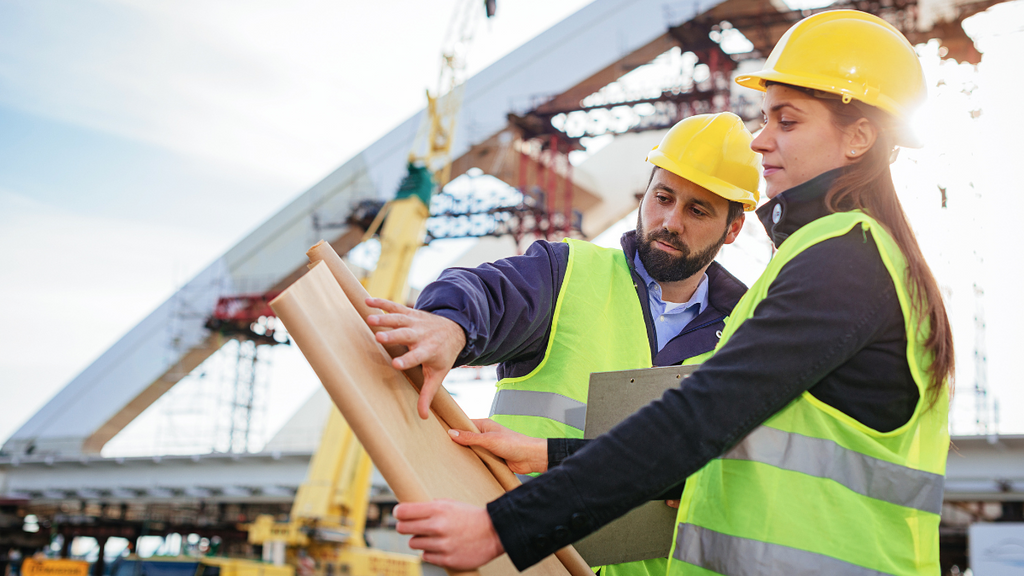Some Known Questions About Geotheta.
Some Known Questions About Geotheta.
Blog Article
Indicators on Geotheta You Need To Know
Table of Contents5 Easy Facts About Geotheta ExplainedGeotheta Fundamentals ExplainedSome Known Incorrect Statements About Geotheta What Does Geotheta Mean?Unknown Facts About Geotheta

They perform website examinations, collect samples, do laboratory examinations, and examine information to examine the viability of the ground for building tasks - Consulting Engineer. Based upon their findings, geotechnical engineers supply referrals for structure design, incline security, preserving frameworks, and mitigation of geotechnical dangers. They collaborate with other professionals, such as designers, structural designers, and building teams, to ensure that geotechnical factors to consider are integrated right into the overall job design and execution
By assessing the behavior and homes of soil and rock, they can recognize possible geotechnical dangers such as landslides, soil negotiation, or incline instability. Their experience helps protect against failings or mishaps that can threaten lives and home. Below are some in-depth tasks and obligations of a geotechnical designer: Website Investigation: Geotechnical engineers conduct website investigations to collect data on subsurface conditions.
They interpret the information to recognize the residential properties and actions of the dirt and rock, including their toughness, leaks in the structure, compaction attributes, and groundwater conditions. Geotechnical Evaluation and Style: Geotechnical designers evaluate the information accumulated during website examinations to analyze the stability and suitability of the site for construction projects. They perform geotechnical calculations and modeling to review elements such as birthing capacity, settlement, incline security, side earth stress, and groundwater flow.
What Does Geotheta Do?
Structure Style: Geotechnical designers play an essential function in designing structures that can securely support the designated structure. They analyze the soil problems and tons needs to identify the appropriate foundation type, such as superficial foundations (e.g., footings), deep structures (e.g (https://ianhammond2191.wixsite.com/my-site-2/post/unlocking-the-secrets-of-geotechnical-engineering-with-geotheta)., piles), or specialized methods like soil improvement. They consider aspects such as settlement limits, bearing ability, and soil-structure interaction to create optimum foundation styles
They examine construction strategies, screen site tasks, and conduct area assessments to verify that the style suggestions are adhered to. If unanticipated geotechnical issues arise, they analyze the circumstance and offer recommendations for remediation or changes to the design. Threat Analysis and Mitigation: Geotechnical engineers analyze geotechnical dangers and dangers connected with the project site, such as landslides, liquefaction, or soil disintegration.

Partnership and Communication: Geotechnical designers work very closely with other professionals associated with a project, such as architects, structural designers, and building and construction teams. Reliable communication and partnership are vital to incorporate geotechnical considerations into the general project style and building procedure. Geotechnical designers provide technological competence, solution questions, and guarantee that geotechnical requirements are fulfilled.
Geotheta Fundamentals Explained
Right here are some types of geotechnical engineers: Structure Designer: Foundation engineers concentrate on making and assessing foundations for structures. They examine the dirt problems, load requirements, and site features to identify one of the most ideal foundation type and style, such as superficial structures, deep structures, or specialized strategies like pile foundations.
They assess the aspects affecting incline security, such as soil buildings, groundwater problems, and incline geometry, and develop techniques to stop incline failings and minimize threats. Quake Designer: Earthquake engineers specialize in analyzing and developing structures to endure seismic forces. They examine the seismic danger of a website, evaluate dirt liquefaction possibility, and create seismic layout standards to make certain the safety and security and strength of structures during earthquakes.
They perform area screening, gather examples, and evaluate the gathered data to characterize the dirt residential properties, geologic developments, and groundwater problems at a site. Geotechnical Instrumentation Engineer: Geotechnical instrumentation designers concentrate on tracking and measuring the behavior of dirt, rock, and frameworks. They set up and maintain instrumentation systems that check variables such as dirt settlement, groundwater degrees, slope movements, and architectural displacements to evaluate efficiency and supply early cautions of possible concerns.
4 Easy Facts About Geotheta Described
They conduct examinations such as triaxial tests, combination examinations, direct shear examinations, and permeability tests to collect data for geotechnical analysis and layout. Geosynthetics Engineer: Geosynthetics designers specialize in the design and application of geosynthetic materials, such as geotextiles, geogrids, and geomembranes. They use these products to boost dirt stability, strengthen inclines, offer water drainage services, and control disintegration.
They tend to be investigative people, which means they're intellectual, introspective, and curious. They are interested, methodical, reasonable, logical, and logical. A few of them are additionally social, implying they're kind, go to these guys generous, participating, person, caring, practical, understanding, tactful, and pleasant. Does this audio like you? Take our free occupation examination to learn if geotechnical designer is one of your top profession matches.
In the office environment, geotechnical engineers make use of specialized software application tools to carry out computations, produce designs, and analyze data. They prepare records, testimonial task specs, interact with clients and team members, and coordinate task tasks. The workplace setting provides a helpful atmosphere for research study, analysis, and cooperation with other specialists entailed in the project.
5 Easy Facts About Geotheta Explained
They often visit task sites to perform site examinations, evaluate geotechnical problems, and gather information for analysis. These brows through include traveling to various places, sometimes in remote or difficult surfaces. Geotechnical engineers might carry out dirt sampling, conduct tests, and display building tasks to guarantee that the geotechnical elements of the project are being carried out correctly.
Geotechnical designers likewise function in specialized geotechnical labs. In these facilities, they carry out experiments, do tests on dirt and rock examples, and analyze the engineering homes of the products. Geotechnical research laboratory engineers work thoroughly in these atmospheres, handling testing tools, running instruments, and recording information. They team up with other lab team to ensure precise and reliable screening results.
Report this page